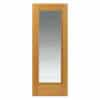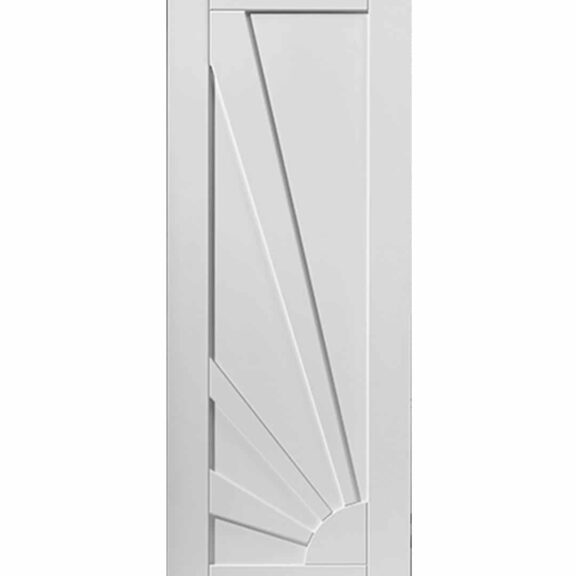JB Kind’s Medina Oak Glazed Internal Door. Featuring a large central panel of clear glass with raised beading, it allows the light, and the eyes, to pass effortlessly between rooms.
With its minimalist design it is the perfect style partner to modern kitchens and living rooms.
Trim Tolerance
Top 10mm
Bottom 10mm
Sides 3mm
We deliver throughout the mainland UK.
Subject to items lead-time/availability. We aim to dispatch the same day for all orders paid and cleared before 2 pm. However due to ongoing issues with transport in the industry, if it’s not dispatched on the same day, we will notify you if there are any issues and advise the day of dispatch.
Orders after 12 pm, on the weekend, or on a bank holiday are dispatched the next business day. If you prefer you can order your goods online. And collect from our Glasgow store.
Don’t book joiners, builders, tradespeople before the goods arrive. No charges can be made to Shawfield Timber for late, damaged delivery and delays to a project.
Full details of our delivery terms can be found on our Delivery Page.

Q and As for all doors
When looking at or reading about doors, you are likely to come across some new terminology.
Here is a list of the words and phrases often used when describing wooden doors.
ARCHITRAVE:
A decorative moulding that surrounds the door, and bridges the gap between the edge of the frame and the wall.
APERTURE:
An opening in a door where glass would be fitted.
BEADING:
The mouldings that surround a panel in a solid door, or a pane of glass in a door.
BESPOKE DOORS:
Doors that are tailor-made to meet individual requirements. Choosing an alternative to the stock doors from the brochure allows clients to request special sizes and alternative designs to match their specific needs.
BI-FOLD:
These are doors that fold together as they open to save space, using a tracking system that enables the door to slide into position. Bi-folds are particularly suitable for smaller spaces and can also be installed as a pair to create a room divider.
CERTIFIRE:
An independent, audited process to ensure that Fire Doors are manufactured to specific standards.
CORE CONSTRUCTION:
The internal composition of a door.
DOOR PAIRS:
Two symmetrical matching doors installed adjacent to each other and modelled to form a pair of doors, creating double the size of the opening of an individual door.
FD30 FIRE DOORS:
Doors that have been tested by an accredited test house to ensure that they are able to resist the passage of fire for more than 30 minutes. Likewise, FD60 fire doors will last at least 60 minutes.
FINISH:
The surface of the door. Doors can be supplied finished, (usually with clear lacquer), or unfinished/natural (where you are able to apply your own finish).
FLAT PANEL:
This is a panel on a door which is not raised, bevelled or profiled.
FRAME:
The timber components (e.g. linings & casings) that are fitted within a wall opening to which a door is fixed.
FSC®:
The Forest Stewardship Council is an independent organisation that promotes the responsible management of forests worldwide. The FSC standard is recognised globally.
GROOVES:
These are lines cut into the face of the door that create a pattern or design.
HANDING:
Predominantly referring to door pairs, it describes which door in the pair opens first. E.g. RHA (right hand away) or LHA (left hand away).
INLAY:
A decorative strip, design or pattern which is embedded into the front of the door. Typically the inlay is made of a complementary material or alternative colour to the door, like a veneer or coloured plastic, and it is flush with the door’s surface.
INSERT:
Similar to an inlay but usually slightly thicker and it may not be flush with the door’s face (front of the door).
LATCH PACKS:
These packs contain everything you need to fit your door including handles, hinges and a latch mechanism.
LIGHT:
This refers to an individual pane of glass within a door e.g. a ‘2 light’ door has two panes of glass.
LININGS/CASINGS:
Another name for an internal door frame.
LIPPINGS:
These create the door edge and can be reduced slightly in size to fit a specific door opening, without exposing the inner core of the door. Solid lippings (as long as they are large enough) allow the edges of doors to be modelled to form rebated pairs.
MULLION:
This is required when fitting an external door with a sidelight.
PAINTED FINISH:
The door has been painted to achieve a high-quality finish. This can be a colour or even grained timber effect.
PAIR MAKER:
A timber moulding that is shaped to fit on a door edge to easily create a door pair.
PRE-FINISHED:
A pre-finished door is one that is ready painted or varnished.
POCKET DOOR SYSTEM:
This is a sliding door system that is built into the wall so that the door disappears on opening completely into the pocket. A popular, contemporary door solution that is ideal for properties with limited space.
PRIMED:
Doors that have been prepared with an undercoat ready for a topcoat finish.
REBATING:
This makes doors into a pair, by machining a groove into the edges of two doors, creating a partial overlap where the doors meet.
SAFETY GLASS:
The glass that is heat-treated so that, should it break, it becomes granular and does not create sharp shards. All of JB Kind’s pre-glazed doors comply with building regulations and meet European standards.
SEMI-SOLID CORE:
The centre of the door is part solid and part cellular components.
SHAKER STYLE:
This type of door has a simple, flat, recessed centre panel and usually no detailing. Most often the shaker style doors have right-angled edges, although occasionally you will find those that have a slightly bevelled finish.
SIDELIGHT:
A panel which is usually fixed at the side of a hinged door. A sidelight is normally a narrow panel of glass set alongside a larger door.
SKIRTING:
This is a decorative wooden board running along the bottom of an interior wall, to finish the join between the wall and the floor.
SOLID CORE:
A heavy and solid centre to a door, it is normally made from wood-based timber components.
STANDARD CORE:
Standard core doors have a cellular structure inside the door. This means that the door is lighter in weight than solid or semi-solid core doors and is well suited to domestic use.
STILE:
This refers to the side of the door. Specific terms are hanging stile (hinge side), leading stile (the side that opens into a room) and meeting stile (door pairs).
SUSTAINABLE SOURCES:
To use materials from sustainable sources means that for every resource used/harvested from the land, a replacement will be created. In the context of JB Kind doors, it means that our supply partners ensure that trees are planted to replace those harvested and that only plantation timber specifically grown for use as raw material is used.
TIMBER GRAINING:
This is a pattern of fibres that you can see when you cut wood open.
UNFINISHED:
The door is supplied prepared ready for a topcoat finish. E.g. varnish or paint.
VENEER:
A thin slice of timber used as a decorative material on the visible face of the door.














Reviews
There are no reviews yet